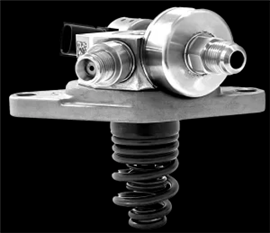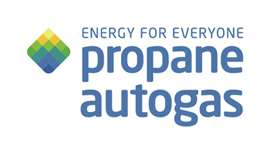Joint LPG engine project develops low-emission engine solution
21 September 2023
 The Stanadyne fuel injector and pump delivers LPG by means of the vapor-lock inhibiting system developed and designed by Katech. (Photo: Stanadyne)
The Stanadyne fuel injector and pump delivers LPG by means of the vapor-lock inhibiting system developed and designed by Katech. (Photo: Stanadyne)
Stanadyne, has developed a direct injection fuel pump and injector system to support a joint liquid propane gas (LPG) engine project with the Propane Education & Research Council (PERC) and Katech. The technology combines Stanadyne’s direct injection fuel pump and injector system with Katech’s vapor lock technology to create a medium-duty engine system that can deliver propane autogas at a constant 350-bar pressure directly into the engine while mitigating the potential for vapor lock.
The combined system fueled a standard 6.6L GDI engine during a 250-hour performance and durability test, successfully demonstrating that Class 3-5 gasoline and diesel trucks can be effectively powered by LPG.
“The direct liquid injection system for high-vapor pressure gases such as propane autogas has been technically elusive until this joint partnership between PERC, Katech and Stanadyne materialized,” said Dr. Gokul Vishwanathan, PERC director of research and sustainability. “This technology will be a significant enabler for high-efficiency and low-emission propane and renewable propane-powered engines and hybrids for the on-road and off-road markets.”
The Stanadyne-Katech joint development team were able to successfully overcome the challenge of vapor lock, a common technical challenge affecting direct injection for liquified gasses, including LPG. Stanadyne engineers provided a modified pump design with a unique liquid flow path through the pump, plus modified the fuel injectors with additional coatings for greater wear resistance. Together with Katech’s vapor-lock inhibiting system, these components allowed vapor to return to the fuel tank while continuously delivering liquid fuel to the pump for lubrication and cooling.
 Stanadyne has successfully partnered with the Propane Education & Research Council (PERC) and Katech on a joint liquid propane gas (LPG) engine project. (Source: PERC)
Stanadyne has successfully partnered with the Propane Education & Research Council (PERC) and Katech on a joint liquid propane gas (LPG) engine project. (Source: PERC)
“The ability to partner with PERC and Stanadyne has yielded a promising step forward in LPG DI technology,” said Katech Lead Engineer Eric Suits, “Stanadyne’s background in DI fuel systems has allowed Katech to focus more directly on the development and advancement of vapor lock systems, LPG DI engine controls and future LPG DI applications. This has produced a truly complimenting control strategy and delivery system necessary to ensure reliable LPG DI operation under all operating conditions.”
The tests successfully showed that the technology works with existing engines and can provide Class 3 to 5 trucks with a potential decarbonization solution that could help the industry meet ultra-low emissions mandates going into effect in 2027. Longer term, Stanadyne said the LPG direct fuel injection pump and injector solution will facilitate cleaner propulsion and allow operators to keep their internal combustion engine commercial vehicles in operation while still meeting sustainability goals.
“Internal combustion engines are the workhorses of our economy, and this advancement in technology will help them run much more sustainably using renewable fuels,” said David Zimmerman, Stanadyne president. “The opportunity to partner with PERC and Katech on this initiative aligns with our commitment to developing solutions bridging the significant adoption gap between fossil-fueled propulsion and low-carbon and zero-carbon fueled vehicles.”
STAY CONNECTED



Receive the information you need when you need it through our world-leading magazines, newsletters and daily briefings.
CONNECT WITH THE TEAM












